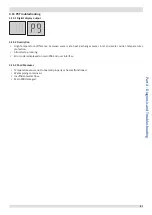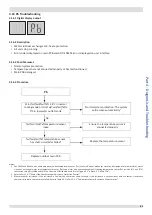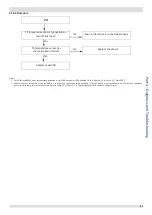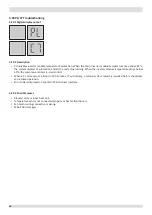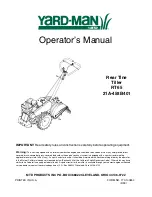
83
Part 4 - Diagnosis and T
roubleshooting
4.13.10 Compressor replacement procedure
Step 1: Remove faulty compressor and remove oil
▪ Remove the faulty compressor from the outdoor unit.
▪ Before removing the oil, shake the compressor so as to not allow
impurities to remain settled at the bottom.
▪ Drain the oil out of the compressor and retain it for inspection.
Normally the oil can be drained out from the compressor discharge
pipe. Refer to Figure 4-4.11.
Step 2: Inspect oil from faulty compressor
▪ If the oil is clear and transparent, go to Step 6. Slightly yellow oil is not an indication of any problems.
▪ If the oil is dark, black or contains impurities, the system has problems and the oil needs to be changed and go to Step 3.
(If the compressor oil has been spoiled, the compressor will not be being lubricated effectively. The moving parts will
wear. Abrasion will lead to a larger load and higher current. More electric energy will get dissipated as heat and the
temperature of the motor will become increasingly high. Finally, compressor damage or burnout will result)
Figure 4-4.12: Inspecting compressor oil
This oil is black
- it has been
carbonized
This oil is a little
yellow, but is clear
and transparent
and the condition is
acceptable
Cloudy or gray
oil indicates
abnormal
system
operation
This oil is still
transparent but there
are impurities which
may clog the filter
This oil contains
particles of copper
Step 3: Replace oil separator, accumulator and high pressure tank
▪ If the oil from a compressor is spoiled, replace oil separator, accumulator and high pressure tank.
▪ If the oil from a compressor is spoiled, check filters in the unit. If it is blocked, clean with nitrogen or replace.
▪ If the oil from a compressor is spoiled, clear the oil in the system by nitrogen to ensure there is no spoiled oil in it.
▪ If the oil drained from the faulty compressor is clean and transparent in Step 2, replace the faulty compressor.
Step 4: Check filter
Step 5: Clear the oil in the system
Step 6: Replace compressor



















